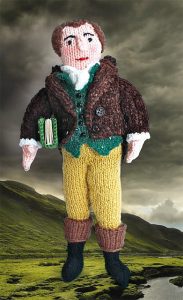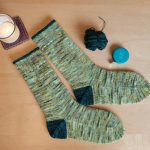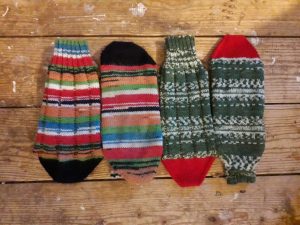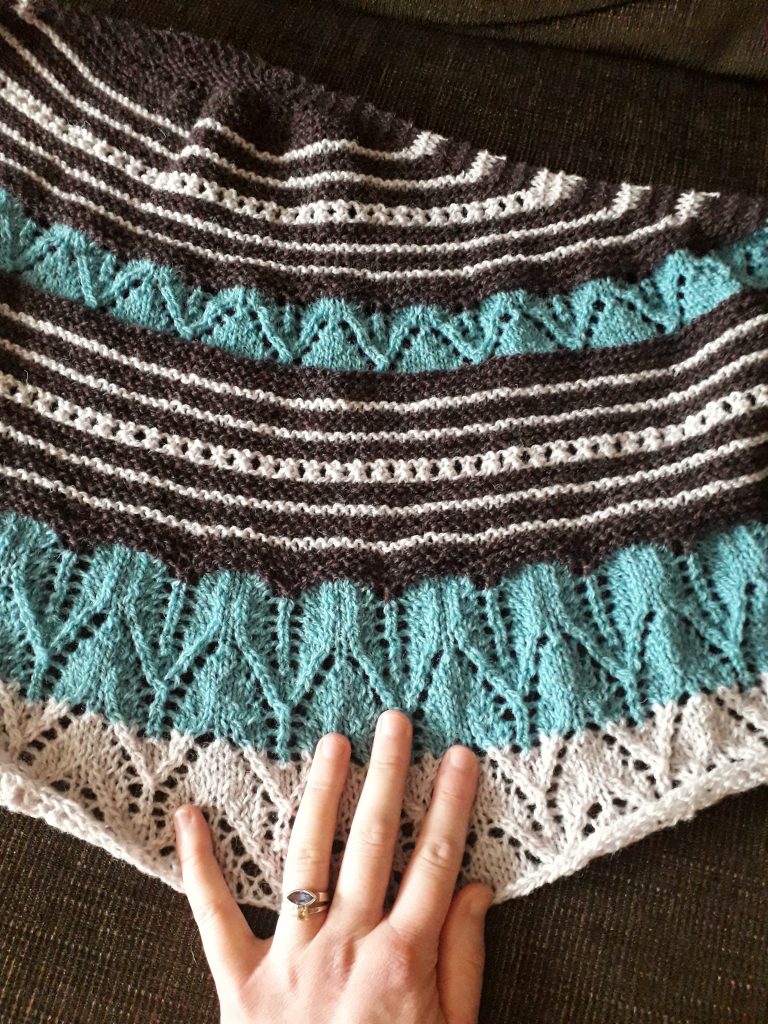If you’re a garment-making yarnie, you’ve almost certainly heard the term “size inclusivity”. In the knitting and crochet world, this is generally accepted to mean that, at a minimum, the finished garment will fit a person whose full bust measurement is somewhere between 30-60” (75-150cm).
Despite a much-needed and laudable increase in size inclusive garment patterns in the last few years, there are still plenty of people who struggle to create garments that fit them well. Ironically, it’s often the exact same people who struggle to find ready-to-wear clothes that fit them, and who maybe turned to making their own in the hopes of a better fit – which makes sense, because clothing companies and garment designers are using similar size charts to grade their patterns. But it’s not very fair, is it?
What’s even more unfair is that there isn’t a simple solution to this one. It’s not a case of grading to a bigger size range (and even that, I have to acknowledge, is only simple in concept); it’s a case of constantly evaluating every pattern, every construction method, every design we come up with in order to find new ways to make it fit bodies that don’t fit the size charts.
Sometimes that modification might be really easy, like knitting a few more rows to make a garment longer, or something that’s already well established, like adding bust or waist shaping. But there are plenty more innovations yet to be discovered, and some of them are so simple, but somehow not yet the standard.
Drop shoulder garments are having a bit of a moment, and it’s easy to see why; their simple construction method is accessible both to designers and knitters, making it easy to place design elements or take a first step into garment knitting. However, I had never been able to make one myself as a knitter, because the sleeves were always too tight for my big biceps, and having a seam there just made it all the more painful to wear. It was only once I started thinking about designing my own garments that I realised the oh-so-simple (once you think of it!) solution: just mix and match!
Because a drop shoulder garment’s body meets its sleeves in a simple straight opening with no shaping, it’s really easy to do that. The designer is already grading the body and sleeves separately; if you want to put a larger (or smaller) sleeve on the same body size, all you need to do is leave a larger (or smaller) opening.
Isn’t it simple once you think of it? And the best part is, once you understand how this little hack works, you can apply it to any traditionally constructed drop shoulder pattern, so long as there’s a size that’ll fit your body and another that’ll fit your arms.
But – and of course there’s a but – this is still putting the onus on the knitter to make a modification in order to get a good fit, and that’s the kind of thing that can really wear a person down and make them fall out of love with their craft.
So, what I’m hoping for is that designers will join me in adopting mix and match body and sleeve sizing for their drop shoulder designs as standard, allowing knitters to pick and choose and find a fit that works for them. It means a little more thought in how to structure the pattern’s instructions, how to label your sizes, and how to communicate sizing information pre-purchase, but it also means a much wider audience will feel confident that your pattern will fit them.
There are of course many other ways in which bodies don’t fit the standard size charts, and that’s why there’s a catch-all term to group them together: shape inclusivity. It’s a big area with a lot of different needs, but by listening to fat yarncrafters when they talk about their own bodies and fit challenges, I’m hopeful that us designers can come up with more and more ways to be innovative and inclusive.
Here are my top tips on things to look for to identify size and shape inclusive patterns:
- An inclusive size range of at least 30-60” / 75-150cm at the full bust (note – this is the body measurement, not the finished garment)
- Patterns that share the schematic and measurements pre-purchase, so you can be certain of a good fit
- Patterns that include instructions and yardage alterations for modifications / options, such as altering the length, adding waist or bust shaping, or mix and match body and sleeve sizing
- Information about the designer’s starting point / fit model; do they start with a straight size model and size up, or do they start with a fat model?
- Patterns shown on a range of body types; check to see how the areas you struggle to get a good fit on look on each of the bodies (e.g. do the larger bodies have wide gaping necklines compared to the smaller bodies?)
Designers who have thought to communicate all this with you pre-purchase are usually actively working to be both size and shape inclusive, and there’s a much better chance that you’ll be able to achieve a good fit with their patterns.
About the Author
Victoria Marchant has been designing knitting patterns for fat bodies since 2020. She specialises in novel construction methods that allow knitters to mix and match body and sleeve sizing so that whether your body fits the size chart or not, you can get a perfect fit every time.

About Roseability
Roseability’s innovative mix and match body and sleeve sizing and drop shoulder construction is forging a new path in size and shape inclusivity. With 12 body and 12 sleeve sizes, a total of 144 combined size options, Roseability also includes instructions to adjust the length of both the body and the sleeves, including a short-sleeved tee option. All of this information is given pre-purchase, along with a swatch guide and schematic. This makes it possible for you to work out exactly which size to knit, exactly how much yarn you’ll need, and exactly which needles will give you gauge, so you can be confident that you’ll obtain the results you want before making the purchase.
Purchase Roseability from Victoria’s site here: https://www.victoriamarchantknits.com/pattern/roseability/






































